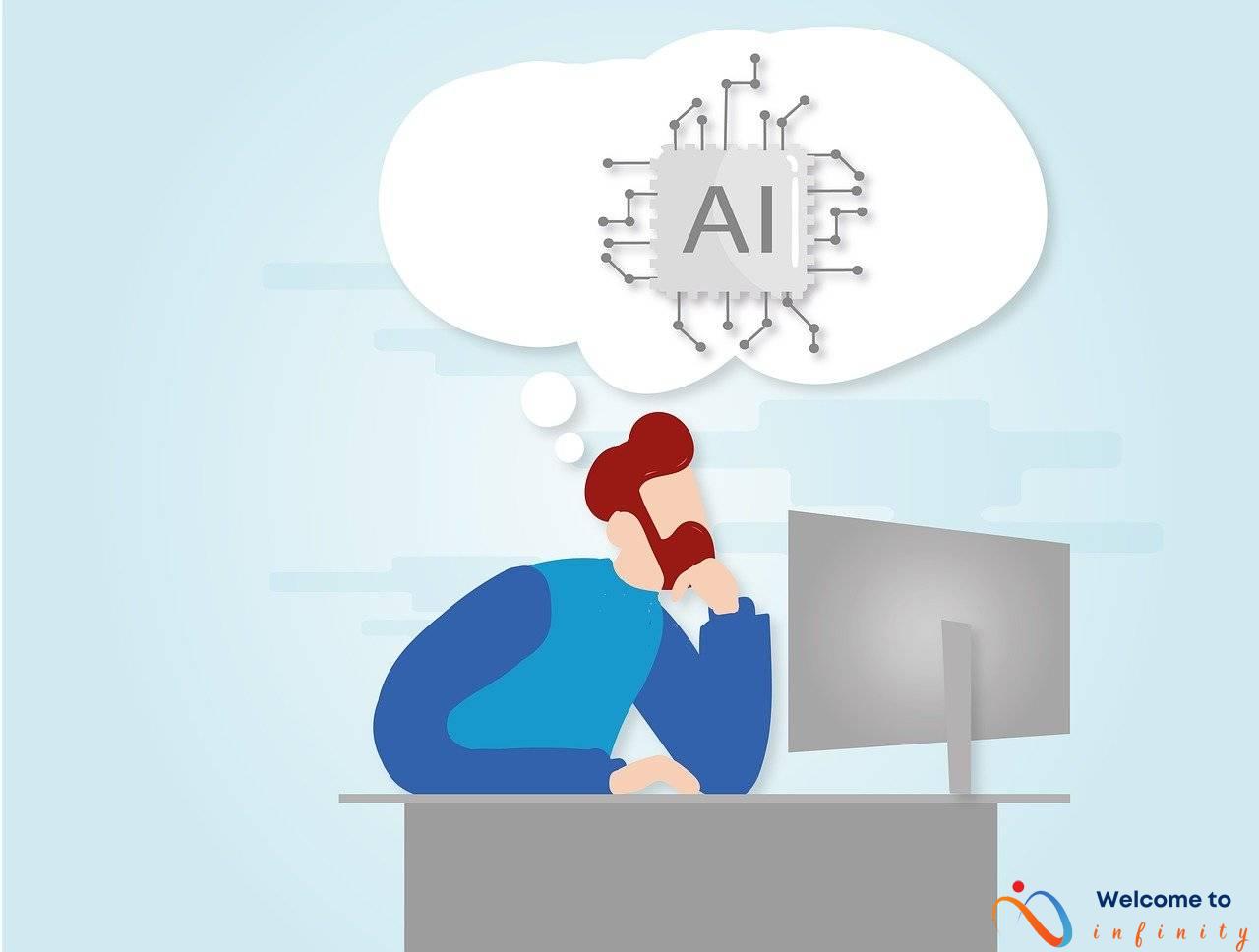Artificial intelligence (AI) is revolutionizing the world of robotics, and social robots such as humanoid and assistive robots are at the forefront of this technological advancement. As we explore the potential of AI in social robotics, we can witness the impact it can have on human society, from healthcare to education and beyond.
Social robotics is a growing field that aims to create robots that interact with humans, and as the demand for social robots continues to increase, there has been a surge in the development of humanoid and assistive robots. Humanoid robots aim to resemble and interact with humans while assistive robots are designed to assist individuals with specific tasks.
The development of humanoid robots requires significant technological advancements, including natural language processing, facial recognition, and movement. Humanoid robots have potential applications in various fields, including healthcare, entertainment, and space exploration, but they also raise ethical concerns such as job displacement and privacy issues.
Assistive robots, on the other hand, are designed to assist individuals with disabilities or in need of personal care. AI can be used to develop assistive technologies such as prosthetics and exoskeletons, which can enhance mobility, strength, and independence for individuals with physical limitations or injuries.
The benefits of assistive robots in healthcare, home assistance, and rehabilitation are undeniable, but there are also ethical considerations and concerns about the safety and privacy of individuals using this technology. It is important to continue to explore the potential of AI in social robotics while also addressing the ethical implications and challenges it presents.
The Rise of Social Robotics
The field of social robotics has grown rapidly in recent years, as the demand for robots capable of assisting with a wide range of tasks has increased. Social robots are being developed to aid in healthcare, education, and customer service, among other fields. They can act as companions or assistants and are capable of performing everyday tasks such as cleaning, cooking, and providing medication reminders.
One of the primary advantages of social robots is their potential to provide assistance to individuals who might otherwise struggle to complete tasks on their own, such as the elderly or disabled. The use of social robots in healthcare, for example, has shown promise in improving patient outcomes and reducing the burden on healthcare workers. In education, robots are being used as teaching aids to help students master new skills and concepts in an engaging and interactive way.
The deployment of social robots in customer service is also on the rise, with companies using them to provide customers with information, assistance, and support. By using social robots, companies are able to provide a more personalized and efficient service, while also reducing the cost of staffing customer service teams.
The potential for social robots to provide companionship to individuals is also being explored. With loneliness and social isolation on the rise, particularly among the elderly, social robots are being developed to provide a source of company. They can engage in conversations, play games, and even watch television with their users, providing an invaluable source of entertainment and company.
Building Humanoid Robots
Building humanoid robots involves intricate technological advancements that closely resemble human beings. These robots are designed to interact with humans and perform tasks independently. The development of humanoid robots requires extensive research and development in fields like engineering, computer science, and artificial intelligence.
One of the key challenges in developing humanoid robots is natural language processing. Robots need to understand and interpret human language to be able to communicate effectively. Facial recognition is another significant aspect of humanoid robots. It allows robots to detect and recognize human expressions, which is essential for effective communication.
Movement is another crucial aspect of humanoid robots. They need to move like humans and perform tasks like dancing, walking, and gesturing. This requires extensive research and development in the areas of motor sensory systems and control theory. The challenges of achieving natural human-like motion involve extensive programming, mechanical and electrical engineering development, and control theory.
Although humanoid robots have many promising applications, such as in healthcare and entertainment, ethical concerns arise, such as the potential loss of jobs and invasion of privacy. Overall, building humanoid robots involves cutting-edge advancements in AI and robotics that can have many benefits for society, but also require careful consideration of their potential impact.
Humanoid Robot Applications
Humanoid robots have the potential to revolutionize various industries, such as healthcare, entertainment, and space exploration. In healthcare, these robots can assist medical staff in performing routine tasks, such as taking vitals and administering medication, allowing them to focus on more complex procedures. Humanoid robots can also serve as companions for patients with mental illnesses or for those who are isolated due to physical limitations.
In entertainment, humanoid robots can create new and engaging experiences for visitors to theme parks and museums. For example, at Tokyo Disneyland, guests can meet and interact with popular Disney characters brought to life by humanoid robots. In the advertising and customer service industries, humanoid robots can provide personalized services and recommendations to customers, improving their satisfaction and loyalty.
However, the use of humanoid robots also raises ethical concerns. For example, the development of humanoid robots that can perform tasks traditionally performed by humans can lead to job displacement and loss of income for certain professions. Additionally, there is a risk of privacy violations, as humanoid robots may collect personal data and use it for unintended purposes. Finally, there is the fear of advancing technology surpassing humanity's ability to control or understand it.
In space exploration, humanoid robots can be used for extravehicular activities, such as maintenance and repair of spacecraft and equipment. In the future, humanoid robots may even be used to establish a human presence on other planets. However, the harsh environments of space pose challenges to the development and use of humanoid robots, such as extreme temperatures and radiation exposure.
Overall, the use of humanoid robots has the potential to greatly benefit society, but it is important to consider the ethical implications and ensure that their development and usage are guided by responsible and transparent practices.
Assistive Humanoid Robots for the Elderly and Disabled
As the demand for social robots continues to grow, the development of humanoid robots has become an increasingly important area of focus, particularly in providing assistance to the elderly and disabled. These robots are designed to resemble humans, with the capability to perform tasks such as lifting objects, helping with personal hygiene, and even providing companionship.
One of the main advantages of using assistive humanoid robots is the increased level of independence it provides to individuals with disabilities who may require assistance with daily living tasks. The use of these robots can significantly reduce the need for constant human caregiving and allow individuals to maintain their dignity and privacy.
However, the development and implementation of these robots also come with certain challenges and ethical considerations. For instance, questions have been raised about the potential to replace human caregivers and the loss of jobs that may follow as a result. Furthermore, care must be taken to ensure that the technology does not compromise the privacy of individuals, particularly when it comes to sensitive personal information such as medical records and financial details.
Despite these concerns, assistive humanoid robots offer a vast range of applications, including use in hospitals, rehabilitation centers, and in-home care for patients with chronic conditions or those in need of post-surgery therapy. Furthermore, these robots can provide companionship for individuals who are socially isolated or suffering from loneliness.
As technology continues to advance, the potential applications of assistive humanoid robots for the elderly and disabled are rapidly expanding, offering opportunities to improve the quality of life for individuals who face various challenges. Nevertheless, it is essential to remain mindful of the ethical implications and challenges that arise from implementing these technologies.
Humanoid Robots in Entertainment and Marketing
As the demand for social robots continues to grow, humanoid robots have made their way into various entertainment and marketing industries. Theme parks, museums, and other entertainment venues have started using humanoid robots to enhance customer experiences and create memorable interactions. For instance, theme parks now feature humanoid robots as characters, roaming around and interacting with visitors, creating an immersive experience for them.
In addition to this, many museums have incorporated humanoid robots to provide guided tours to visitors. These robots can navigate through the museum and interact with visitors to enhance their understanding and appreciation of exhibits. Similarly, in advertising and customer service, companies have started using humanoid robots to assist customers with their inquiries or complaints, making it a more personalized experience.
Humanoid robots have also found a place in the entertainment industry. They have been used in movies and TV shows to create life-like characters, making it hard to differentiate between a robot and a human actor. As the technology advances, it is expected that humanoid robots will play a more significant role in various areas of entertainment.
While the use of humanoid robots in entertainment and marketing is exciting, it raises ethical concerns about the use of robots that mimic human behavior. There is a risk that people may become too attached to these robots, and they may begin to replace human interactions. Additionally, issues like data privacy, ownership, and control, which are already present in digital marketing campaigns, may need to be thoroughly addressed with the use of humanoid robots in the field. Therefore, stakeholders must ensure that ethical concerns are adequately addressed before the widespread adoption of humanoid robots in entertainment and marketing.
Humanoid Robot Ethics and Challenges
As humanoid robots become more advanced and integrated into society, their societal and ethical implications must be considered. One concern is the potential loss of jobs and displacement of workers as robots are developed to take over tasks previously performed by humans.
Another concern is privacy, as humanoid robots that can recognize and interact with people may collect personal information. As society becomes more reliant on these robots, the issue of data security becomes paramount.
Moreover, the idea of humanoid robots surpassing human intelligence raises ethical and societal dilemmas. If robots become more intelligent than humans, who will be responsible for their actions? Will they have the same moral and legal obligations as humans?
There is also an ethical consideration of how we treat humanoid robots. As they become more human-like in appearance and behavior, should they have rights similar to those granted to humans or animals?
- Privacy concerns with humanoid robots collecting personal information
- Potential job displacement as robots become more advanced and take over tasks previously performed by humans
- Potential ethical concerns surrounding robots surpassing human intelligence
- Ethical considerations of granting rights to humanoid robots as they become more humanlike
As society continues to develop and integrate humanoid robots, it is crucial to address the ethical and societal implications that arise. This will require ongoing dialogue and collaboration among developers, policymakers, and the public at large.
Developing Assistive Robots
One of the most beneficial applications of AI in robotics is in the development of assistive robots for individuals with disabilities or injuries. These robots, including prosthetics and exoskeletons, can greatly enhance mobility and independence for those with physical limitations. With the integration of AI technologies, these robots can also improve their ability to adapt to the needs of their users and perform complex movements with precision.
Assistive robots are being developed to assist individuals with a variety of disabilities, from amputees to those with spinal cord injuries. Prosthetics, for example, can be fitted with sensors that use AI algorithms to learn the user's movements and provide more stable and natural functionality. Exoskeletons can be used to assist with lifting and carrying heavy objects or provide support for individuals with weakened or paralyzed limbs.
The potential benefits of AI in assistive robots are vast, with the ability to greatly improve the quality of life for individuals with disabilities. These robots can be used in a variety of settings, from hospitals to home care, to provide assistance with everyday tasks and help patients recover from injuries or surgeries. They can also be incredibly helpful for older adults who want to live independently for as long as possible.
However, there are also several challenges and ethical considerations to keep in mind when developing assistive robots. The cost of these devices can be prohibitive for many individuals and may not be covered by insurance. Additionally, there are concerns about privacy and data security, as well as the potential for these devices to be used for unwanted surveillance. Despite these concerns, the potential benefits of AI in assistive robots cannot be ignored and will continue to be a key area of focus for researchers and developers in the coming years.
Assistive Robot Applications
Assistive robots have been developed to help individuals with disabilities or injuries in various settings, including healthcare, home assistance, and rehabilitation.
In healthcare facilities, assistive robots can assist doctors and nurses with tasks such as patient lifting and transportation, reducing the risk of injuries to healthcare professionals. They can also be used to monitor patients, collect vital signs, and alert medical staff of any urgent matters, providing efficient and accurate patient care.
At home, assistive robots can assist individuals with everyday tasks such as cooking, cleaning, and personal grooming, providing a sense of independence and improving quality of life. These robots can be especially beneficial for elderly individuals or those with chronic conditions who may need extra assistance with daily activities.
In rehabilitation settings, assistive robots such as exoskeletons and prosthetics can enhance mobility and assist patients with physical therapy exercises and movements. They can also be used for gait training and to improve overall muscle function in patients with neurological conditions.
While there are many benefits to using assistive robots in various settings, there are also challenges to their implementation. The cost of assistive robots can be a barrier, making them inaccessible to those who may benefit from them the most. Additionally, there are concerns about the safety and privacy of individuals using assistive robots, as well as the need for proper training and maintenance to ensure their effectiveness.
Prosthetics and Exoskeletons
Prosthetics and exoskeletons are two types of assistive technologies that have greatly improved the quality of life for individuals with physical limitations or injuries. Prosthetics are devices that replace missing body parts, such as arms, legs, or hands. They are designed to mimic the natural movements of these body parts and can be customized to fit the user's needs.
Exoskeletons, on the other hand, are wearable devices that amplify the user's strength and mobility. They are often used in rehabilitation settings to help patients regain movement and muscle strength. They can also be used as assistive devices for individuals with mobility impairments, such as those with spinal cord injuries. Exoskeletons provide support for the user's body, allowing them to stand, walk, or perform other activities they may not have been able to do without assistance.
The development of prosthetics and exoskeletons has been made possible in part by advances in AI, which allows for more precise and personalized designs. Prosthetics can be fitted with sensors that respond to the user's muscle movements, allowing for more natural and intuitive control. Exoskeletons can also be adjusted to the user's needs, and can be programmed to respond to different movements or levels of support.
Despite the benefits of these technologies, there are still challenges to be addressed. Prosthetics can be expensive and are not always covered by insurance, making them inaccessible to many who could benefit from them. Exoskeletons can also be costly, and require specialized training to use effectively. There are also concerns about the long-term effects of using these technologies, particularly on the user's physical health and emotional well-being.
Overall, the development of prosthetics and exoskeletons represents an exciting and promising area of AI-assisted assistive technology. As research and development continue, we can expect to see even more advancements that enhance mobility, strength, and independence for individuals with physical limitations or injuries.
Assistive Robots in Healthcare and Rehabilitation
Assistive robots have become increasingly common in many healthcare settings, including hospitals and rehabilitation centers. These robots are used to help patients with chronic conditions, such as Alzheimer's or Parkinson's disease, and those who are recovering from surgery or injury.
In hospitals, assistive robots can provide valuable support to medical professionals by helping with tasks such as transporting patients, retrieving equipment, and monitoring vital signs. This can free up nurses and doctors to focus on more complex, patient-centered tasks.
Rehabilitation centers often use assistive robots to help patients regain mobility after an injury or surgery. These robots can help patients with exercises and therapies, providing tailored feedback and support throughout the process.
Assistive robots are also being used in-home care for patients who require long-term support. These robots can help with tasks such as bathing, dressing, and meal preparation, providing valuable support to patients and their caregivers.
Despite the potential benefits of assistive robots in healthcare, there are also concerns about safety and privacy. For example, some worry that robots could be hacked or could malfunction, potentially causing harm to patients. Additionally, there are concerns about the loss of privacy that could occur when robots gather personal health information.
As technology continues to advance, it is likely that we will see even more applications for assistive robots in healthcare and rehabilitation. While there are certainly challenges to overcome, the potential benefits of these robots in improving patient outcomes and supporting medical professionals are significant.
Assistive Robot Ethics and Challenges
While the development of assistive robots has the potential to aid individuals with disabilities or injuries, there are also ethical considerations and concerns surrounding their use. One major concern is the safety and privacy of those using assistive robots, particularly with regard to data security and protection.
Additionally, there may be financial barriers to utilizing assistive robots, as they can come with a high cost. This may limit accessibility for individuals who cannot afford the technology or who lack insurance coverage for it.
Another consideration is the potential impact that assistive robots could have on employment, particularly in fields like home healthcare and caregiving. Some worry that the use of assistive robots could displace human workers, leading to job loss and economic disruption.
It's important to carefully weigh the benefits and challenges of utilizing assistive robots, ensuring that their implementation is both ethical and equitable in order to maximize their potential to improve individuals' lives.









